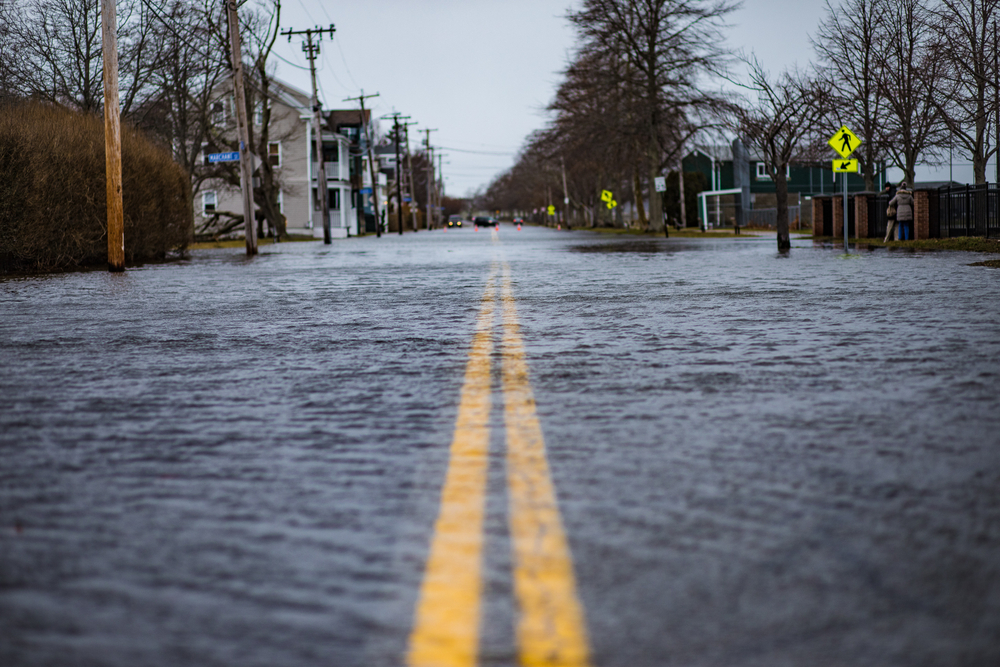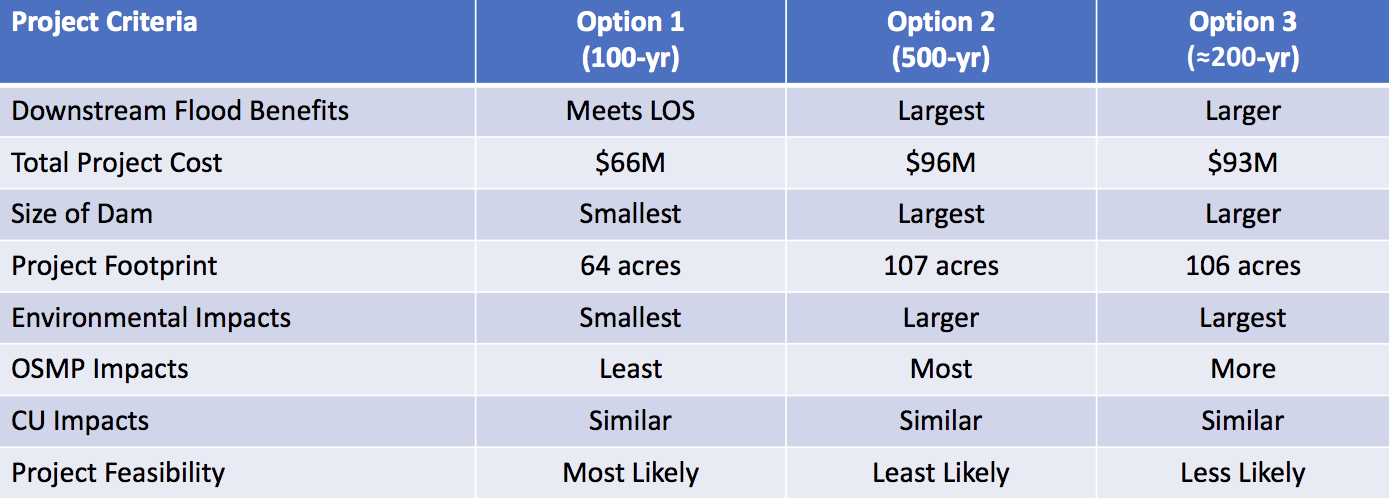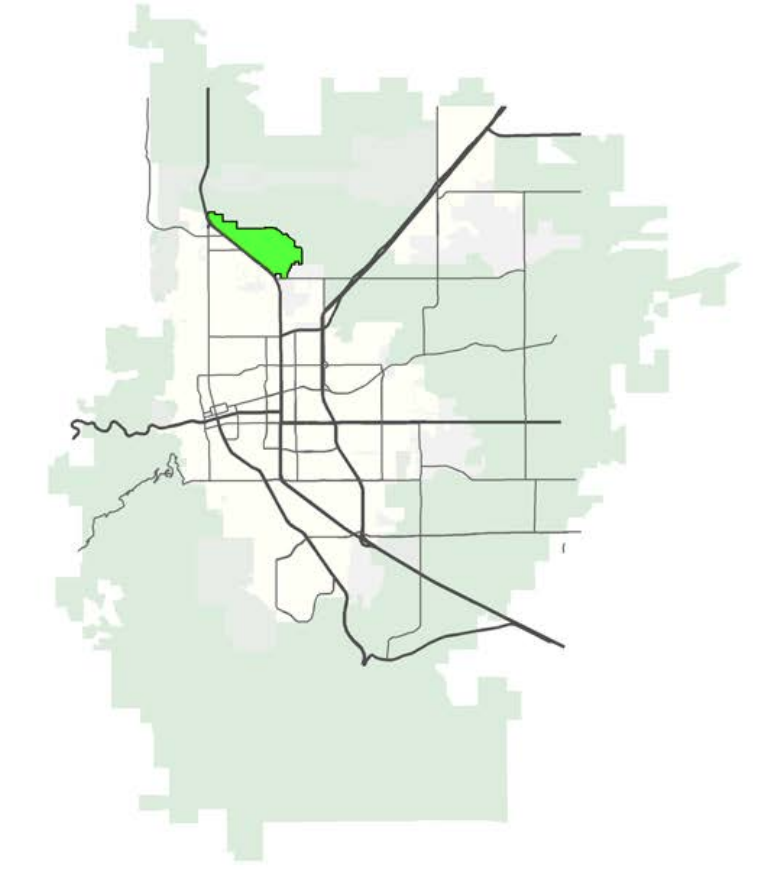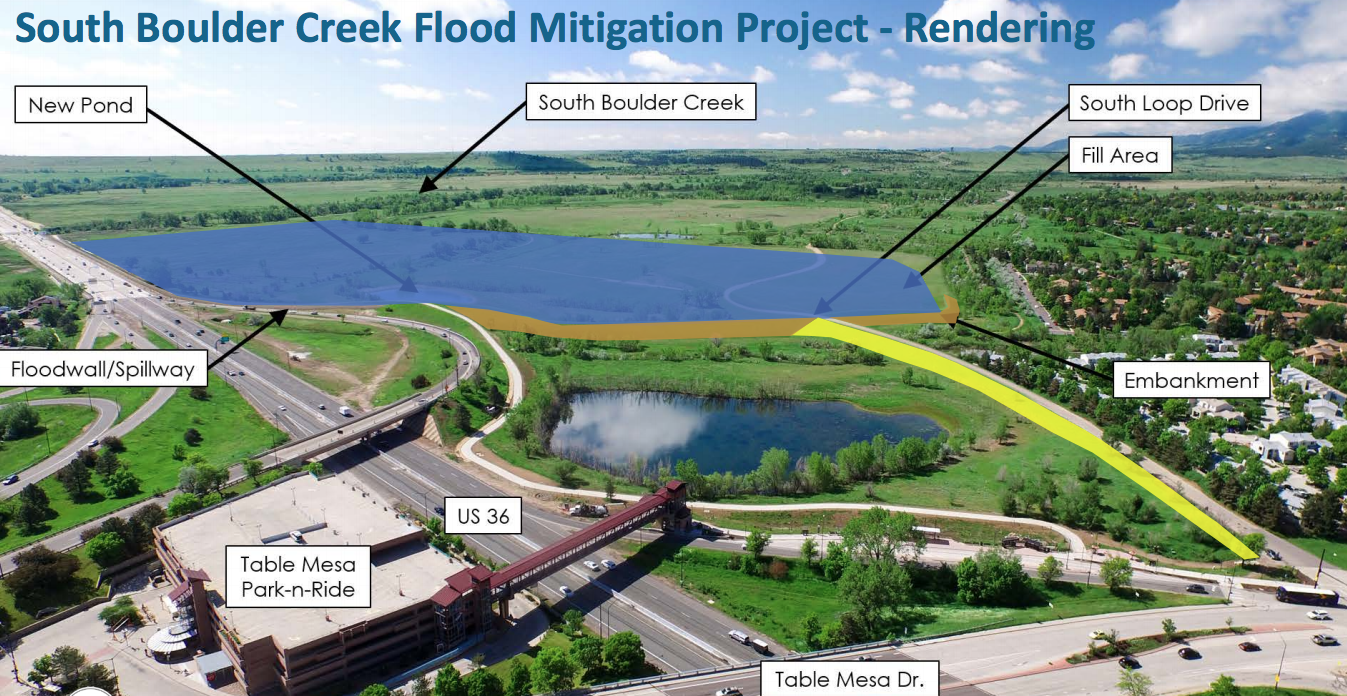Boulder settles on flood design; council still split on annexation, land swap

Saturday, Feb. 29, 2020
What’s old was made new again this week as Boulder’s elected officials on Tuesday picked a new-old plan to provide flood protection in South Boulder, one of the options presented 18 months ago when council first selected a design.
Also carrying over from that long-ago discussion were council members’ reservations about allowing the University of Colorado — which owns the land where the dam, floodwall and detention area will be located — to annex into the city without knowing exactly what the future campus will look like. Still alive is the long-floated hope that CU will donate the 80 acres necessary for flood structures but choose to locate its campus in planning reserve property north of the city.
Un-new, too, was the tension between those two competing desires: To expediently provide flood mitigation for the 3,500 downstream residents while exercising as much control as possible over development on the 308-acre parcel south of town. The meeting was marked by terse exchanges between city and CU officials, creating the most contentious discussion to date for the new council.
Flood plan picked
At least in theory, Boulder has settled on a design to provide flood protection: Variant 1, 100-year, which will contain enough detention to prevent flooding in a storm that has a 1% chance of happening any given year.
It was on the tablePostponement of a motion, or a vote in 2018, though council ultimately went with the 500-year design of Variant 1 out of a desire to protect against larger storms that could become more common as the climate changes. Since that time, analysis has revealed that the 500-year option will likely be unable to meet a key requirement that creek flows under the U.S. 36 bridge be maintained at current levels.
“I can’t guarantee we could get that (design) through the permitting process,” Joe Taddeucci, director of public works for utilities, said Tuesday. night. “It may not be worth bringing that forward.”

The costs for the 500-year design are also significantly higher than for the 100-year, mostly due to the 76 acres of fill needed to guarantee CU the 129 acres it wants to build into a southern campus. Mayor Sam Weaver, in supporting the 100-year option, pointed out that those costs are not related to flood mitigation but to CU’s development desires.
“I’m happy to support moving forward” because I want to see flood protection get done, Weaver said, but “I will do so noting that our hands are being constrained somewhat by the landowner on the site.”
Decoupling flood protection, annexation
It’s typical that lands needed for utilities projects are not owned by the city, Taddeucci testified. In that case, the focus becomes on keeping “good relationships” with landowners.
That has been the focus of the past seven months and, by some measures, the driving force behind most staff and city action since the August 2018 selection of the preliminary design: Finding a way to bring CU on board with a design they have consistently said won’t work for them.
Weaver and other council members on Tuesday sought a way around that dilemma by asking university officials to consider “decoupling” the flood project from the annexation process. CU needs to add its land into the city in order to connect to utilities; Boulder needs the acreage for flood mitigation, identified as a top priority in the South Boulder Creek Master Plan adopted in 2015.
If CU were to give Boulder the land outright, it would allow flood work to continue without delay and provide time for other options to be assessed — such as a swap for property in the 500-acre Planning Reserve.

The university in the past has opposed this proposal because of all that would be involved: Unlike the southern parcel, CU hasn’t conducted analysis of the northern land for suitability as a future campus. The reserve is also not currently eligible for annexation or development; the process to reclassify it, set to begin in 2021 with a baseline urban services study, will take four to six years to complete.
“If this council is prepared to commit to an annexation of either the CU South property or the Planning Reserve property, even at your discretion, since you’re not in a hurry to build tomorrow, why can’t we decouple that from flood mitigation?” asked councilman Mark Wallach. “If your interest is similar to ours in terms of accelerating flood mitigation and not holding it hostage … why can’t you do that? Why won’t you do that?”
“We have stated we’re not interested in decoupling the process,” said CU’s Frances Draper on Tuesday.
“I understand,” Wallach replied. “I’m asking why that is.”
Draper: “We don’t think there’s enough motivation for the city to (allow annexation) in the future.”
Wallach: “So you’re just holding it for leverage?”
Draper: “As are you.”
“I don’t think you’re able to commit at a legal level that is satisfying to the university,” she continued. “We’ve consulted with the university’s legal team; we’re not just sitting here making stuff up.”
CU, as a state entity, has a mandate from Colorado residents to do what is best for the institution, Draper added. “To ask us to abandon our mission is unreasonable.”
Flap over swap
Council spent a fair amount of time arguing over the advisability of a land swap, and whether or not the Area III activation process could and should be fast-tracked. Even with an accelerated process, council members Rachel Friend and Aaron Brockett argued, annexation of the reserve will take years and has many unknowns.
Typical annexation of reserve land, some of which is owned by Boulder County, would require a four-body approval: Boulder County commissioners, county planning commission, Boulder’s Planning Board and city council. Because of a state law requiring land next to city limits to be added in first, a private landowner would also have to agree to annexation; there has been interest from this party in the past, staff and council said.
Because much of the planning reserve was purchased with dollars earmarked for parks, the Parks and Recreation Advisory Board would also have to sign off on a disposal. Disposal is its own complicated process: PRAB, Planning Board and council have to OK it, and a public election is possible, too, if enough signatures were gathered to trigger a vote.

Assuming everybody was on board, CU and the city would still be in the position of haggling over what should be built there. It’s unclear how much of the guiding principles developed for CU South would be applicable to a northern campus.
“If we get all five bodies to approve that,” Brockett said, “it seems like we’d be more or less where we were with the university in 2015.”
Furthermore, he said, it doesn’t make sense to send traffic through the heart of town. From the main campus, Broadway would be the most direct route; faculty and staff commuting from outside Boulder would likely take Foothills and cut over to U.S. 36 via Diagonal. And while CU South is close to transit — several bus lines serve the area — there is limited service to the north.
“There’s literally zero transit to the Planning Reserve,” Brockett said. “How many vehicle miles traveled would we be adding and is that contradictory to our climate goals?”
Transit would likely be built up as part of activation, Weaver said. CU should pitch in if they are planning a campus there.
“I don’t see any benefit from considering a land swap,” Friend said. “It doesn’t help flood mitigation; it adds to staff work and time. CU doesn’t want to look at it. Why does Boulder?”
Mayor Weaver spoke to the why: If CU built up north, the southern parcel would then be Boulder’s to preserve as parks and open space, as some community members have long wanted. (Even under annexation, some of the land will become open space; the university has also pledged to keep the campus “permeable” and preserve recreation opportunities.)
“The land at CU South has been desired by this community for a very long time because it’s such high-quality habitat,” Weaver said. “And people love to go out there and recreate. So there would certainly be some benefit to the community.”
Land up north has fewer environmental considerations, staff said, though there are several prairie dog colonies that will need to be dealt with. That may make it more suitable for development than CU South, Weaver argued.
“CU South reminds me of a huge, huge Hogan Pancost,” which council last year removed from development consideration by transferring ownership to parks. “It’s wetlands, it’s slumping soil, a huge road over the berm and down into the campus.”
A land swap in Area III should be explored in parallel with southern annexation to keep options open, Weaver said. That idea did not gain majority support, in part because it would pull staff off current projects, something council pledged not to do at last month’s agenda-setting retreat.

Speed vs. control
Even without a land swap to complicate things, annexation will still be a slog as Boulder wrestles for details that CU doesn’t have — and doesn’t have to provide. A state entity, the university is not bound by Boulder’s building restrictions. Annexations typically come with detailed site plans for development, but CU won’t begin its master plan process until next year.
Even then, specific CU South planning — what buildings will look like, how much classroom space versus housing is planned, etc. — could be years away, subject to change as the university’s needs change.
A master plan looks at the development potential of all our land holdings, CU’s Derek Silva said Tuesday night. It doesn’t get into specifics for each site; it’s more about “ideation” and “high-level principles.”
“That’s not going to establish anything firm for CU South,” Silva said. “It’s not going to give us any indication for a timeline for developing (there). … It could be 2027, it could be 2030. We just don’t know.”
That doesn’t sit well with council members used to knowing the specifics of every building they approve, from the slope of the roof to the width of the trees being planted.
“You don’t know what you’re going to get; you don’t know if you’re even going to get the housing,” councilwoman Mary Young said. “It’s not the city standing in the way of annexation, it’s the university’s master planning process.”
This story is comprehensive, but it in no way captured everything from Tuesday’s discussion. For more of that, view this Twitter thread.
CU officials have agreed to certain stipulations, including building no taller than the city’s 55-foot height limit and capping the number of dwellings to 1,100. Still, it seems unlikely Boulder will be able to compel further guarantees. Council members expressed doubt that CU would abide by established agreements.
“A lot of uncertainty in these processes, frankly, have come from CU,” Wallach said, including last month’s warning from university officials that it may not commit to providing housing. As laid out in the guiding principles, housing is supposed to be a primary use of the site. CU on Tuesday said it will build dwellings if more than one access point can be created into the campus.
“Is this simply the proposal de jour, or is this the one you really, really mean?” Wallach asked. “And how are we to judge the difference? I have no idea what you’re actually committing to, and that distresses me.”
Some of Wallach’s peers pushed back on that assertion. The guiding principles has ambiguity built in, Brockett said; council has always been operating with that understanding.
“(They) in no way said we were going to figure out the exact shape of the buildings that would go there,” Brockett said.
Councilwoman Friend asserted that the city’s 18 months of design-tweaking for flood mitigation has created more uncertainty “than the month CU took to consider housing.” Young asked staff directly if this process has caused delay in flood work, an inquiry they handled with hesitation.
“It’s a tough question to answer,” said Senior Planner Phil Kleisler, “but there may have been… I don’t know if I have a great answer for you.”
“It is not uncommon for a project with this level of complexity to take years and years,” Taddeucci said. Staff and consultants have continued with work that needs done irrespective of the eventual design. The hard deadline will be in about a year when the permitting process begins.
“So a year from now, if we didn’t have resolution on landowner issues, we could run into issues?” Weaver asked.
“Yes,” Taddeucci responded.
It’s worth taking the time “question things,” councilman Adam Swetlik said, including looking at a land swap. Flood protection isn’t the only consideration.
“It takes a little bit of hubris as a human to say, ‘I’m the most important, my protection. It’s got to be about me right now,'” Swetlik said. “I think the community does need to understand that a long time ago, Boulder was established in 16 drainage areas. This isn’t the only flood area. It’s not like people don’t have a choice to leave the area.”
Boulder recently placed formerly unhoused residents in apartments downstream, via housing vouchers, councilwoman Friend shot back. They don’t have a choice to leave, she said, nor do others.
“This is not hubris talking,” she said. “This have been a very patient trip down a very long road.” Looking at a land swap “is a delay, and it is saying that people’s lives aren’t that important.”
Councilman Bob Yates asked that staff and CU find out if access to the site from Highway 93 would pass muster with Colorado Department of Transportation. If not, that may dampen the university’s desire to do housing, changing the equation for Boulder.
Staff agreed to pursue that information. Annexation will be revisited in May, according to a project timeline.
— Shay Castle, boulderbeatnews@gmail.com, @shayshinecastle
Want more stories like this, delivered straight to your inbox? Click here to sign up for a weekly newsletter from Boulder Beat.
CU South Growth and Development Housing Open Space Aaron Brockett annexation Bob Yates Boulder Boulder County campus CDOT city council city of Boulder Colorado Department of Transportation CU South dam detention development disposal flood mitigation flood protection flood wall housing land swap Mark Wallach open space Open Space Mountain Parks OSMP Parks and Recreation Advisory Board Planning Board Planning Reserve public works Rachel Friend Sam Weaver South Boulder Creek transportation U.S. 36 University of Colorado utilities


0 Comments Leave a comment ›